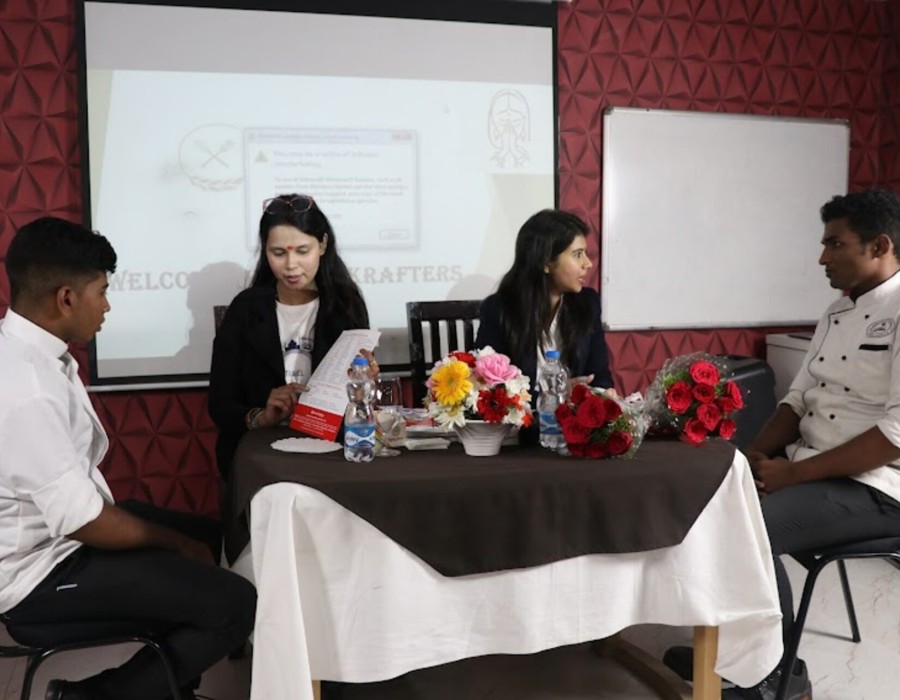What are the fundamental knife skills every chef should master, and how do they impact the quality and presentation of dishes?
Fundamental knife skills every chef should master include:
- Chopping: Quick and efficient cutting into uniform pieces, essential for even cooking.
- Dicing: Creating small, even cubes, important for consistency in texture and flavor.
- Julienning: Cutting food into thin, matchstick-sized pieces, often used for garnishes or stir-fries.
- Mincing: Finely chopping food, often used for garlic or herbs to evenly distribute flavor.
- Deboning: Removing bones from meat or fish, critical for presentation and eating ease.
These skills impact dish quality by ensuring even cooking, enhancing flavor distribution, and improving the visual appeal, making the dish more attractive and appetizing.
2. Culinary History and Culture:
How do regional ingredients and traditional cooking methods influence the cuisine of a specific country or culture?
Regional ingredients and traditional cooking methods are foundational to a country’s cuisine. For example, in Italy, the use of local olive oil, tomatoes, and fresh herbs defines its Mediterranean cuisine. Traditional cooking methods like slow braising for meats or baking pizzas in wood-fired ovens create unique flavors and textures that characterize Italian dishes. These elements preserve cultural heritage, reflect local agriculture and climate, and create distinct regional flavors.
3. Food Safety and Hygiene:
What are the critical steps in ensuring food safety in a professional kitchen, and how can cross-contamination be prevented?
Critical steps include:
- Proper Hand washing: Frequent and thorough hand washing to prevent the spread of pathogens.
- Sanitizing Surfaces: Regular cleaning and sanitizing of work spaces and utensils.
- Correct Food Storage: Storing foods at appropriate temperatures to prevent bacterial growth.
- Proper Cooking Temperatures: Cooking foods to safe internal temperatures.
- Separation of Raw and Cooked Foods: Using separate cutting boards and utensils for raw and cooked foods to prevent cross-contamination.
4. Recipe Development:
How do chefs balance flavors and textures when creating a new recipe, and what role do seasonality and ingredient availability play?
Chefs balance flavors (salty, sweet, sour, bitter, umami) and textures (crunchy, creamy, chewy) to create a harmonious and satisfying dish. They consider the seasonality and availability of ingredients to ensure the freshest flavors and highest quality. Seasonal ingredients often have better taste and nutritional value, and their use supports local agriculture and sustainability.
5. Nutrition and Dietetics:
How can chefs modify recipes to accommodate dietary restrictions and preferences while maintaining flavor and appeal?
Chefs can:
- Use Substitutes: Replace ingredients with suitable alternatives (e.g., almond milk for dairy, gluten-free flour for wheat).
- Focus on Spices and Herbs: Enhance flavor without adding allergens or unwanted ingredients.
- Experiment with Cooking Methods: Use grilling, steaming, or roasting to bring out natural flavors.
- Create Balanced Dishes: Ensure the dish still has a balance of flavors and textures.
6. Baking and Pastry Arts:
What are the key differences between baking and cooking in terms of techniques and precision, and how does this affect the outcome of baked goods?
Baking requires precise measurements and ratios, as it is a science involving chemical reactions (e.g., rising of bread). Cooking is often more forgiving and allows for adjustments during the process. Precision in baking ensures consistency and proper texture (e.g., the rise of cakes, flakiness of pastries), while imprecision can lead to failures (e.g., dense cakes, flat bread).
7. Culinary Management:
What are the best practices for managing a kitchen staff, including scheduling, training, and conflict resolution?
Best practices include:
- Effective Communication: Clear instructions and feedback.
- Training Programs: Regular training to keep skills updated.
- Fair Scheduling: Rotating shifts to prevent burnout.
- Conflict Resolution: Addressing issues promptly and fairly, promoting a positive work environment.
8. Sustainable Cooking:
How can chefs incorporate sustainable practices in their kitchens, such as reducing food waste and sourcing local, organic ingredients?
Chefs can:
- Plan Menus Seasonally: Use ingredients that are in season and locally available.
- Utilize Whole Ingredients: Reduce waste by using all parts of an ingredient (e.g., vegetable peels for stock).
- Compost Scraps: Turn food waste into compost.
- Source Locally: Buy from local farmers to reduce transportation emissions and support local economies.
9. Culinary Innovation:
How do modern culinary techniques, such as molecular gastronomy, influence contemporary cuisine, and what are some examples of their application?
Molecular gastronomy uses scientific principles to transform ingredients in unexpected ways. Examples include:
- Spherification: Creating caviar-like spheres with liquid centers.
- Foams and Gels: Using emulsifiers and stabilizers to create unique textures.
- Sous Vide: Precision cooking in vacuum-sealed bags at controlled temperatures.
These techniques elevate dining experiences by introducing novel textures and presentations.
10. Plating and Presentation:
What are the principles of effective food presentation, and how do visual aesthetics contribute to the dining experience?
Principles include:
- Balance: Distribute elements evenly.
- Color Contrast: Use complementary colors to enhance visual appeal.
- Texture Variety: Include different textures to engage the senses.
- Height and Structure: Create visual interest with layers and height.
Visual aesthetics contribute by making the dish more enticing, setting expectations for flavor, and enhancing the overall dining experience through a visually stimulating presentation.






Comments